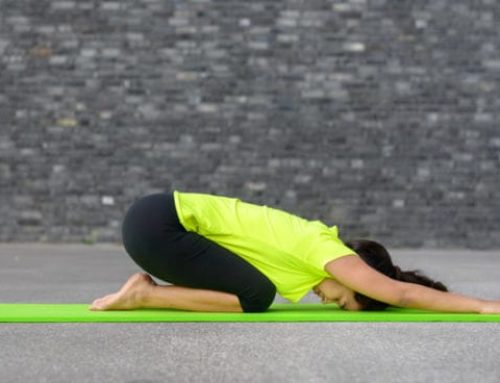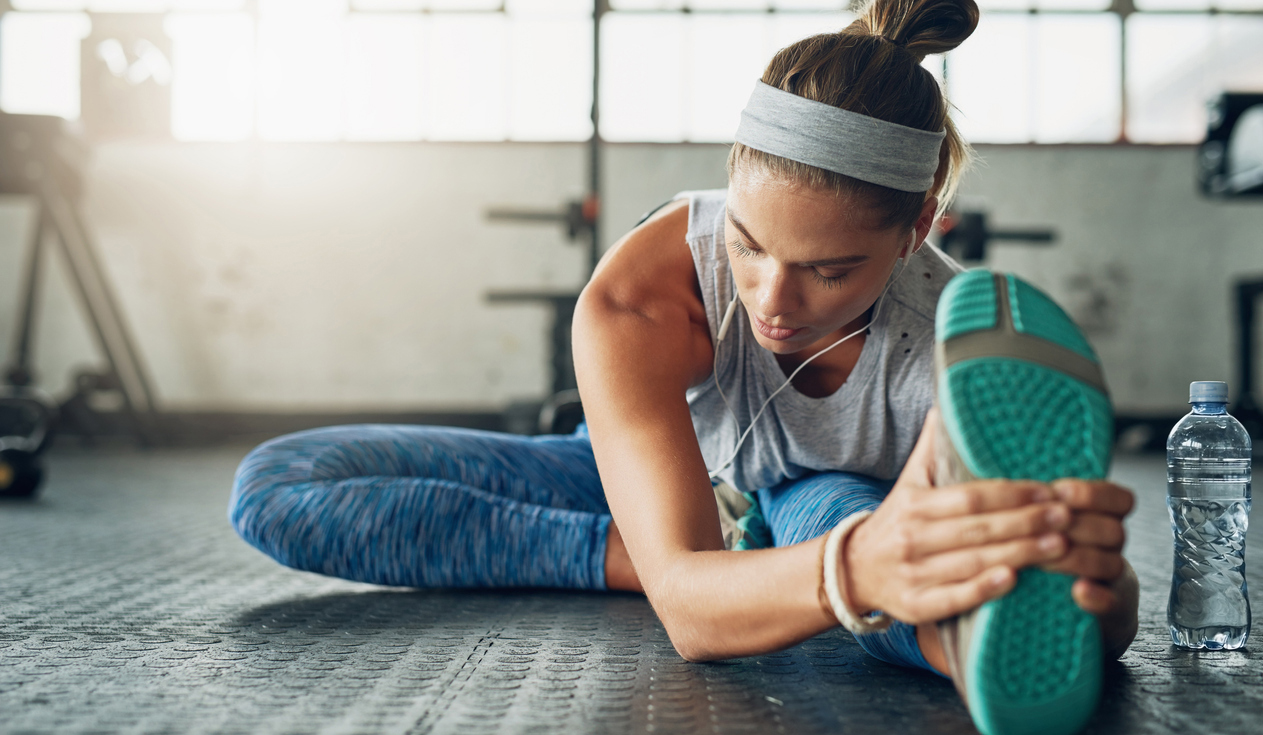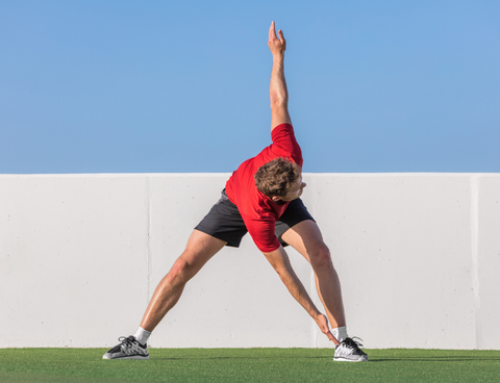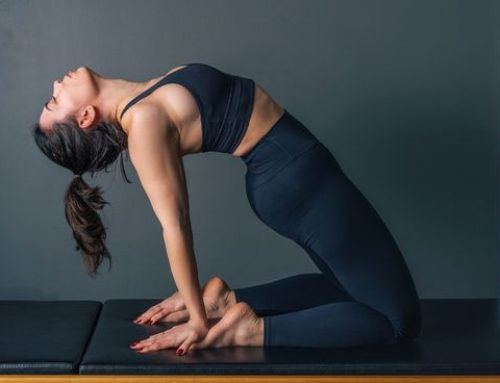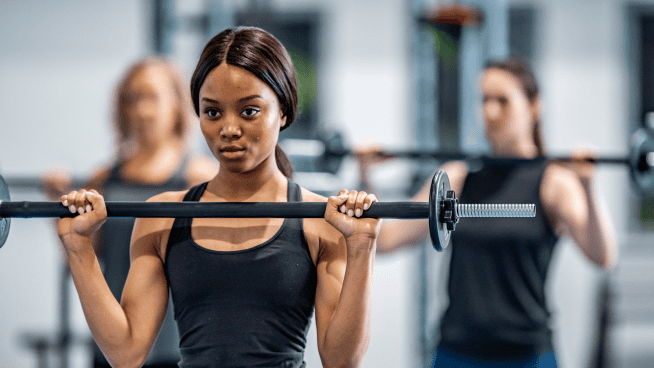You Probably Have Weak Hips. Here’s What That Means and How To Fix It
Hips are one of the most ambiguous terms in athletic performance.
Tight hips, loose hips, strong hips, weak hips—these phrases get tossed around ridiculously often in the world of sports and sports training. But does the average athlete have any idea what they actually mean? Slim chance. That’s a serious dilemma, because if an athlete doesn’t understand an issue, he or she won’t be motivated to address it. That’s why we talked to our network of experts to demystify phrases like “weak hips” and help you become a smarter, healthier, better athlete.
What are the Hips?

In a medical dictionary, the hip bone is defined as “forming the main part of the pelvis on each side of the body and consisting of the fused ilium, ischium and pubis.”
But unless you’re a candidate for a hip replacement (which probably isn’t the case if you don’t reside in a retirement home), when someone talks about your hips, they aren’t talking about the actual bones. They are more likely referring to a group of muscles that cause movement in the hip. There are roughly 17 of these muscles, and they’re often divided into four groups—gluteal, lateral rotator, adductor and iliopsoas.
RELATED: Can the “Third World Squat” Help You Unlock Elite Athletic Performance?
The gluteal group contains the gluteus maximus, medius and minims, plus the tensor fasciae latae. The adductor group contains the adductor brevis, adductor longus, adductor magnus, pectineus and gracilis. The illiopsoas group contains the iliacus and the psoas major; and the lateral rotator group consists of the externus and internus obturators, the piriformis, the superior and inferior gemelli and the quadrates femoris.
Sometimes, these muscles are categorized as “hip flexors” and “hip extensors.” Hip flexors, muscles located toward the front part of the hips, allow you to lift your knees and bend at the waist. Hip extensors, muscles located toward the back part of the hip, allow for backward movement of the thigh. In many athletes, the hip flexors are tighter than the hip extensors—a state that hampers performance and is often referred to as simply “weak” or “tight” hips.
How Does Hip Strength and Flexibility Relate to Performance?

The muscles that control the movement of the hips are incredibly important for athletic performance.
Perhaps the most common problem faced by athletes with weak or tight hips is the inability to maintain strength throughout their range of motion. “To me, weak hips would be ones that can’t move through a full range of motion,” says Aaron Bonaccorsy, a performance coach at STACK Velocity Sports Performance. “An athlete’s power comes from their glutes and hip extensors. Lack of development of them will not allow them to get true extension.” Strong, mobile hips allow an athlete to stay in athletic, explosive positions during both training and competition.
A post on the website Strength and Conditioning Research explains how athleticism is tied to the hips. “Heavier loads, faster speeds, and greater jump heights require a larger proportional contribution from the hip than lighter loads, slower speeds, or lower jump heights. Therefore, high performance sports involve the hip extensors (gluteus maximus, hamstrings, and adductor magnus) to a greater extent than sub-maximal efforts in practice,” writes the author. Until you unlock your hips, you’ll never be as strong, fast and explosive as you should be.
Bonaccorsy believes tight hips and weak hips are often synonymous, since both can impose a drag on performance. “A tight muscle is a weak muscle,” Bonaccorsy says. “As a result of tight hip flexors, the hip extensors don’t work to their full capacity.”
How Can Weak Hips Limit You?

In short, weak hips limit you by putting a hard cap on your athletic potential.
If your hips are weak, you won’t be able to tap into the power of fast-twitch muscle fibers inside major muscle groups like the glutes and hamstrings.
How much damage could weak hips be doing to your game?
A 2005 study published in the Journal of Strength & Conditioning Research found that a 12.2 percent increase in hip strength led to a 3.8 percent improvement in the 40-Yard Dash and a 9 percent improvement in a Shuttle Run. If you consider that a 3.8 percent improvement in the 40-Yard Dash equates to dropping from 4.90 to 4.71, the impact that your hips have on your performance becomes crystal clear. “Your foundation starts with your hips. If you can hold a good, athletic position while you’re moving forward, backward, side-to-side, rotating—to me, that’s a sign of strong hips,” says Ben Boudro, owner of Xceleration Sports.
RELATED: The Hip Exercise Every Runner Must Do
Not only do the muscles in and around your hips play a criticial role in performance, they also help you stay injury-free. “Weak hips means lack of full range of motion which leads to muscular imbalances which leads to faulty mechanics, poor movement patterns or in some cases shearing forces on opposing muscles causing direct injury,” Bonaccorsy says. Weak hips cause a ripple effect of improper mechanics throughout the body, meaning they can greatly increase your risk of overall injury. For example, a 2014 study found that “changes in lower extremity biomechanics consistent with decreased risk for ACL injury were observed after participation in a hip-focused training program.”
Inside the weight room, tight or weak hips make it very difficult for you to perform total-body lifts like Squats or Deadlifts with proper form, greatly reducing the effectiveness of your training.
Why Are Weak Hips So Common Among Athletes?

Weak hips are an epidemic in the athlete community. But why?
Part of it can traced to our lifestyle. While those with desk jobs are our society’s biggest sitters, even athletes can find themselves in a seated position for the vast majority of their days. Whether you’re sitting in class, studying for a test or driving to practice, odds are you’re in a seated position with your hands in front of you, your hip flexors (such as the psoas major) shortened and your hip extensors lengthened. Spending large amounts of time in positions like these can lead to a postural problem known as Anterior Pelvic Tilt, which is extremely common, even in the athlete population.
RELATED: 2 Ways to Fix Anterior Pelvic Tilt
Also, most athletes unknowingly work their anterior muscles (such as the quadriceps) more than their posterior muscles (such as the glutes and hamstrings), causing an imbalance in the area that bridges the two—the hips. “If you’re doing all Lunges and no Squats or RDLs, no 360-degree approach to training, your hips aren’t going to do what they should be doing,” says Boudro.
How Do I Know if I Have Weak Hips?
The easiest way is to ask a trainer or strength and conditioning coach who has watched you work out and is familiar with your movement patterns. They may be able to give you the most personalized answer. If you don’t have access to a fitness expert, Boudro recommends using the Overhead Squat as a test.
RELATED: All About the Overhead Squat
The Overhead Squat is a simple exercise that requires you to hold a rod (or barbell) above your head while getting in and out of a deep squat position with proper form. You can read more about the Overhead Squat here. If you cannot get to the required depth without the rod drifting forward or your knees collapsing inward, the culprit is likely weak or inflexible hips.
How Do I Improve My Hips?

First, focus on mobility. “Mobility would be the ability of an athlete to actively move through a range of motion and be stable through that range of motion,” Bonaccorsy says. “Lots of young athletes may be crazy flexible, but they can’t control their own bodies through that range of motion.” Try out some of these routines:
- 3 Essential Hip Mobility Exercises That Increase Speed and Strength
- 9 Stretches and Exercises for Better Hip Mobility
- Hip Mobility Drills for Increased Agility
Second, make sure your routine includes plenty of lifts that engage your posterior chain. Squats, Deadlifts and Glute Bridges are prime examples. If you’re looking for exercises you can perform outside the weight room, Hill Sprints are a great choice. They require a higher level of knee drive and greater hip strength and flexibility than traditional sprints.
RELATED: How to Get Better With Hill Sprints
RECOMMENDED FOR YOU
MOST POPULAR
You Probably Have Weak Hips. Here’s What That Means and How To Fix It
Hips are one of the most ambiguous terms in athletic performance.
Tight hips, loose hips, strong hips, weak hips—these phrases get tossed around ridiculously often in the world of sports and sports training. But does the average athlete have any idea what they actually mean? Slim chance. That’s a serious dilemma, because if an athlete doesn’t understand an issue, he or she won’t be motivated to address it. That’s why we talked to our network of experts to demystify phrases like “weak hips” and help you become a smarter, healthier, better athlete.
What are the Hips?

In a medical dictionary, the hip bone is defined as “forming the main part of the pelvis on each side of the body and consisting of the fused ilium, ischium and pubis.”
But unless you’re a candidate for a hip replacement (which probably isn’t the case if you don’t reside in a retirement home), when someone talks about your hips, they aren’t talking about the actual bones. They are more likely referring to a group of muscles that cause movement in the hip. There are roughly 17 of these muscles, and they’re often divided into four groups—gluteal, lateral rotator, adductor and iliopsoas.
RELATED: Can the “Third World Squat” Help You Unlock Elite Athletic Performance?
The gluteal group contains the gluteus maximus, medius and minims, plus the tensor fasciae latae. The adductor group contains the adductor brevis, adductor longus, adductor magnus, pectineus and gracilis. The illiopsoas group contains the iliacus and the psoas major; and the lateral rotator group consists of the externus and internus obturators, the piriformis, the superior and inferior gemelli and the quadrates femoris.
Sometimes, these muscles are categorized as “hip flexors” and “hip extensors.” Hip flexors, muscles located toward the front part of the hips, allow you to lift your knees and bend at the waist. Hip extensors, muscles located toward the back part of the hip, allow for backward movement of the thigh. In many athletes, the hip flexors are tighter than the hip extensors—a state that hampers performance and is often referred to as simply “weak” or “tight” hips.
How Does Hip Strength and Flexibility Relate to Performance?

The muscles that control the movement of the hips are incredibly important for athletic performance.
Perhaps the most common problem faced by athletes with weak or tight hips is the inability to maintain strength throughout their range of motion. “To me, weak hips would be ones that can’t move through a full range of motion,” says Aaron Bonaccorsy, a performance coach at STACK Velocity Sports Performance. “An athlete’s power comes from their glutes and hip extensors. Lack of development of them will not allow them to get true extension.” Strong, mobile hips allow an athlete to stay in athletic, explosive positions during both training and competition.
A post on the website Strength and Conditioning Research explains how athleticism is tied to the hips. “Heavier loads, faster speeds, and greater jump heights require a larger proportional contribution from the hip than lighter loads, slower speeds, or lower jump heights. Therefore, high performance sports involve the hip extensors (gluteus maximus, hamstrings, and adductor magnus) to a greater extent than sub-maximal efforts in practice,” writes the author. Until you unlock your hips, you’ll never be as strong, fast and explosive as you should be.
Bonaccorsy believes tight hips and weak hips are often synonymous, since both can impose a drag on performance. “A tight muscle is a weak muscle,” Bonaccorsy says. “As a result of tight hip flexors, the hip extensors don’t work to their full capacity.”
How Can Weak Hips Limit You?

In short, weak hips limit you by putting a hard cap on your athletic potential.
If your hips are weak, you won’t be able to tap into the power of fast-twitch muscle fibers inside major muscle groups like the glutes and hamstrings.
How much damage could weak hips be doing to your game?
A 2005 study published in the Journal of Strength & Conditioning Research found that a 12.2 percent increase in hip strength led to a 3.8 percent improvement in the 40-Yard Dash and a 9 percent improvement in a Shuttle Run. If you consider that a 3.8 percent improvement in the 40-Yard Dash equates to dropping from 4.90 to 4.71, the impact that your hips have on your performance becomes crystal clear. “Your foundation starts with your hips. If you can hold a good, athletic position while you’re moving forward, backward, side-to-side, rotating—to me, that’s a sign of strong hips,” says Ben Boudro, owner of Xceleration Sports.
RELATED: The Hip Exercise Every Runner Must Do
Not only do the muscles in and around your hips play a criticial role in performance, they also help you stay injury-free. “Weak hips means lack of full range of motion which leads to muscular imbalances which leads to faulty mechanics, poor movement patterns or in some cases shearing forces on opposing muscles causing direct injury,” Bonaccorsy says. Weak hips cause a ripple effect of improper mechanics throughout the body, meaning they can greatly increase your risk of overall injury. For example, a 2014 study found that “changes in lower extremity biomechanics consistent with decreased risk for ACL injury were observed after participation in a hip-focused training program.”
Inside the weight room, tight or weak hips make it very difficult for you to perform total-body lifts like Squats or Deadlifts with proper form, greatly reducing the effectiveness of your training.
Why Are Weak Hips So Common Among Athletes?

Weak hips are an epidemic in the athlete community. But why?
Part of it can traced to our lifestyle. While those with desk jobs are our society’s biggest sitters, even athletes can find themselves in a seated position for the vast majority of their days. Whether you’re sitting in class, studying for a test or driving to practice, odds are you’re in a seated position with your hands in front of you, your hip flexors (such as the psoas major) shortened and your hip extensors lengthened. Spending large amounts of time in positions like these can lead to a postural problem known as Anterior Pelvic Tilt, which is extremely common, even in the athlete population.
RELATED: 2 Ways to Fix Anterior Pelvic Tilt
Also, most athletes unknowingly work their anterior muscles (such as the quadriceps) more than their posterior muscles (such as the glutes and hamstrings), causing an imbalance in the area that bridges the two—the hips. “If you’re doing all Lunges and no Squats or RDLs, no 360-degree approach to training, your hips aren’t going to do what they should be doing,” says Boudro.
How Do I Know if I Have Weak Hips?
The easiest way is to ask a trainer or strength and conditioning coach who has watched you work out and is familiar with your movement patterns. They may be able to give you the most personalized answer. If you don’t have access to a fitness expert, Boudro recommends using the Overhead Squat as a test.
RELATED: All About the Overhead Squat
The Overhead Squat is a simple exercise that requires you to hold a rod (or barbell) above your head while getting in and out of a deep squat position with proper form. You can read more about the Overhead Squat here. If you cannot get to the required depth without the rod drifting forward or your knees collapsing inward, the culprit is likely weak or inflexible hips.
How Do I Improve My Hips?

First, focus on mobility. “Mobility would be the ability of an athlete to actively move through a range of motion and be stable through that range of motion,” Bonaccorsy says. “Lots of young athletes may be crazy flexible, but they can’t control their own bodies through that range of motion.” Try out some of these routines:
- 3 Essential Hip Mobility Exercises That Increase Speed and Strength
- 9 Stretches and Exercises for Better Hip Mobility
- Hip Mobility Drills for Increased Agility
Second, make sure your routine includes plenty of lifts that engage your posterior chain. Squats, Deadlifts and Glute Bridges are prime examples. If you’re looking for exercises you can perform outside the weight room, Hill Sprints are a great choice. They require a higher level of knee drive and greater hip strength and flexibility than traditional sprints.
RELATED: How to Get Better With Hill Sprints


